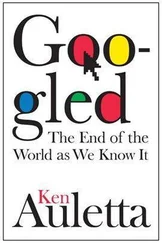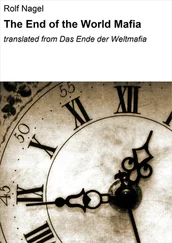Joachim’s new reading of the book of Revelation could be as baffling as the original text itself, and, in fact, his writings did not attract a sizable readership until they were copied out and circulated by his posthumous followers, the so-called Joachimites. Once Joachim had broken Augustine’s grip, however, those who came after him dared to interpret the visions of Revelation in ever more audacious ways. The church condemned them as “diviners and dreamers” and dismissed their writings as “false and fantastic prophecies.” 20Not a few of them were burned along with their manuscripts. But Revelation was now, quite literally, an open book.
“The abbot’s discovery of a new interpretation that remained influential for centuries,” observes Bernard McGinn, “might have made him the patron saint of critics had he been canonized rather than condemned.” 21
Significantly, Joachim’s influence was not confined to the scholars and theologians who found their way to his arcane writings. Some of his readers were outraged by his inflammatory rhetoric, including the high clergy who recognized themselves in his denunciation of Christians who “abandoned the bosom of the Chaste Mother and preferred the Whore who rules over the kings of the earth.” 22But other readers, including popes, kings, and crusaders all across Europe, sought him out as a kind of “apocalyptic advisor,” and begged him to reveal to them the divine secrets that he had prized out of the scriptures. 23
No less commanding a figure than Richard the Lion-Hearted, the legendary English king, called on Joachim on his way to the Holy Land during the Third Crusade in 1190–1191 to find out what Revelation might foretell about his own fate. And the old monk obliged the crusader-king by revealing that when John sees “a beast rise up out of the sea” in the book of Revelation, he is actually glimpsing the Saracen army that Richard would soon face in the battle for Jerusalem. Soon thereafter, Joachim assured Richard, Jesus Christ would return to earth to undertake the final crusade against the Antichrist, the long-promised battle of Armageddon.
“And this Antichrist (he sayde) was already borne in the citie of Rome, and should be there exalted in the Apostolical see,” Joachim is shown to say to King Richard in a sixteenth-century Protestant tract. “And then shall the wicked man be revealed, whom the Lord shall consume with the spirits of his mouth and shall destroye with the brightness of his coming.” 24
The Antichrist, in other words, would be the pope himself.
Another reader of Revelation who achieved a kind of superstardom in the eleventh century was Hildegard of Bingen, the Benedictine nun who distinguished herself as a visionary, a preacher, and an author of apocalyptic tracts as well as various texts on medicine, music, and natural history. Indeed, her treatise on the use of herbs to cure illness remains “among the foundational documents of western pharmacy,” and her musical compositions “make Hildegard the only medieval figure whose life story must include a discography.” 25Like Joachim of Fiore, Hildegard insisted that the greatest evil in Christendom was to be found within the bosom of the church, where members of the clergy were using their offices to enrich themselves—and then using their riches to satisfy their carnal appetites. With Joachim and Hildegard begins the tradition of using Revelation as a weapon against the church itself.
Hildegard saw some grotesque sights when she slipped into one of her trance states, as we have already noted, including the image of a beautiful woman who gives birth to a misshapen beast in the nave of a church: “In her vagina there appeared a monstrous and totally black head with fiery eyes, ears like the ears of a donkey, nostrils and mouth like those of a lion,” Hildegard writes in her account of the vision that came to her as she prayed. “Lo, the monstrous head removed itself from its place with so great a crash that the entire image of the woman was shaken in all of its members.” 26
Hildegard’s vision is plainly inspired by the book of Revelation—“a radical conflation” of the woman clothed with the sun and crowned with the stars, who gives birth to the Savior, and the Whore of Babylon, who fornicates with kings and rides on the back of a satanic beast with seven heads. 27But Hildegard, like her near-contemporary Joachim, assigned new and startling meanings to these symbols: the laboring woman represents the church, and the monster in her womb represents the Antichrist. To put it more plainly, the Antichrist will emerge from within the church itself like an infant from its mother’s womb—“a violent expulsion that is like a reverse rape,” 28according to Bernard McGinn. And Hildegard, who lived chastely as a “bride of Christ” within the walls of a convent, dressing in bridal garb for the rite of communion, resorted to raw and explicit sexual imagery to express her anxieties about the will of God and the fate of humankind in the end-times: “[T]he evil male figure of Satan attacks humanity, the female bride of Christ, progressively figured in Eve, the synagogue, Mary, and the church.” 29
When Hildegard preached in churches and cathedrals—a wholly remarkable role for any woman, but especially a cloistered nun, in medieval Europe—the sins that she found most alarming were the sexual excesses and self-enrichment of the clergy. And she introduced a new understanding of how the final battle between good and evil would manifest itself in the end-times by describing a day in the not so distant future when the “rash populace” and the “greedy princes” would “cast [the clergy] down, chase them, and carry away their riches.” Then the world will see the “dawn of justice,” and the surviving clergy, once again poor and chaste just as God intended them to be, would “shine like the purest gold.” 30
Significantly, if also surprisingly, Hildegard’s preachments were not condemned by the church. Hildegard was so credible and so compelling that the archbishop under whose authority she lived and worked found himself forced to concede that her visions “were from God,” and so did the pope himself. Indeed, a monk was assigned to serve as her scribe so that the prophecies issuing from Hildegard’s mind and mouth would be promptly and accurately preserved, and she corresponded often and at length with popes, emperors, kings, and churchmen all over Europe. And so Hildegard reminds us, yet again, that a charismatic man or woman might succeed in catching and holding the attention of an audience by invoking the power of Revelation. If John had been graced with the gift of prophecy, they were willing to concede, why not Hildegard, too?
Not every reader of the Revelation, however, was able to complain about the church with the same impunity. For instance, the radical faction of the Franciscan order, the so-called Zealots or Spirituals, followed the example of Joachim and Hildegard in conjuring up the Whore of Babylon and the Antichrist when they condemned the corruption that they beheld within in the church itself. So did the Beguines, a remarkable community of women who took up their own crusade for purification and reform in anticipation of the end-times. And, as their numbers increased and their rhetoric escalated, all of them began to attract the ungentle attention of the Church Militant and Triumphant. Along with Jews, Muslims, and assorted Christian heretics, apocalyptic preachers were persons of special interest to the Holy Office of the Inquisition.
Pope John XXII (ca. 1244–1334) convened a papal court in 1317 to consider one especially aggravating instance of apocalyptic speculation among the Spirituals of the Franciscan order. The defendant was a book rather than a human being—a commentary on the book of Revelation by a Franciscan monk named Peter John Olivi (ca. 1248–1298), who insisted that the church founded by the disciples of Jesus Christ was now “infected from head to toe and turned, as it were, into a new Babylon.” 31The author himself was already dead, but his book was found guilty of heresy on charges that sixty of its tenets “offended the faith.” 32Copies of Olivi’s writings were put to the flames, and a few of his flesh-and-blood followers were put to death for the crime of reading and teaching his revolutionary ideas on the end-times.
Читать дальше










